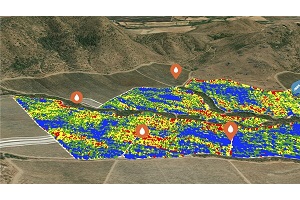Ceres Imaging expands its agriculture data analytics solutions to Europe

Lisbon, Portugal – Ceres Imaging, a data analytics company that builds precision agriculture solutions to reduce risk and improve sustainability outcomes, is announcing its expansion into Portugal and Spain.
Ceres got its start over a decade ago in California’s silicon valley area, and today helps many of the agriculture land holders detect underperforming assets and identify opportunities for the highest ROI in their portfolios. With more than 11 billion individual plant-level measurements captured across 22 million acres and more than 40 crop types – Ceres can model yield impacts and investment ROI in ways other companies can’t.
As part of its launch Ceres has built a local customer support team and has established a network of pilots for its high resolution imagery that are flying throughout the major growing areas.
“We are encouraged by our reception so far in the region. We are looking forward to leveraging our expertise, based on our experiences in North America, Australia, and Latin America, to help farming enterprises protect their yields and manage their scarce natural resources,” says Ramsey Masri, CEO of Ceres Imaging.
Ceres is used by global farming enterprises to protect yield and improve sustainability outcomes, including water efficiency and nutrient use efficiency. With Ceres managers can:
- Identify issues impacting yield and calculate the ROI of capital improvements in ways that other companies can’t.
- Report on key farm metrics at a plant, farm, or portfolio level—or create custom reporting zones to match the way you work.
- Be notified of crop health issues 2-3 weeks before they are visible to the human eye – and before they impact yield.
- Benefit from the most accurate aerial imagery available for agriculture, including chlorophyll, color infrared, absolute and relative NDVI, thermal, and water stress data.
Ceres’ holistic view combines high-resolution imagery, integrations with IoT field sensors, and satellite-based analytics to forecast yield risk and help users take action. Ceres is among the data analytics companies in offering high resolution thermal imagery and plant-level insights with a delivery turnaround time of 48 hours or less. While other data companies show pixels of a whole field, often mixing soil and ground cover with crop information, Ceres uses convolutional neural networks to measure just the crop and provide quantifiable insights on a per plant basis. With quantified feedback on what’s working, it’s easier to prioritise resources and respond quickly to changing conditions in the field.
Comment on this article below or via Twitter @IoTGN
